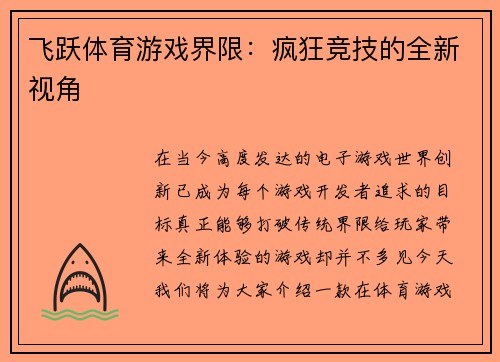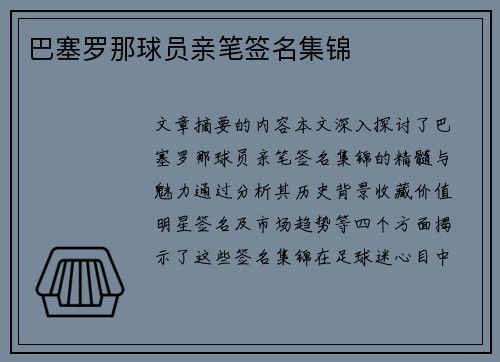Certainly! Here's the structured article on "The Rise and Challenges of Cuban Basketball Players":
6163银河官网**Abstract:**
Cuban basketball has seen both triumphs and tribulations in recent decades. This article explores the journey of Cuban basketball players, highlighting their rise to prominence, the challenges they face within and beyond the sport, and the enduring impact on the national and international stages.
**1、Emergence of Talent**
Cuban basketball has witnessed a surge in talent over the years, marked by grassroots initiatives and national programs aimed at nurturing young athletes. The development of local leagues and academies has provided a fertile ground for budding players to hone their skills and showcase their potential on a larger stage.
Historically, Cuba has produced athletes renowned for their agility and strategic prowess on the court. This foundation has been crucial in shaping the current generation of players, who often emerge from humble beginnings but possess raw talent and a fierce determination to succeed.
In recent years, Cuban basketball federations have intensified efforts to identify and support promising prospects from a young age. Talented individuals are scouted and enrolled in specialized training programs, where they receive coaching and mentorship to refine their technical abilities and tactical understanding of the game.
As a result, Cuban basketball has seen a steady influx of skilled players who are not only competitive domestically but also capable of making significant contributions to international tournaments.
**2、Challenges on the Domestic Front**
Despite the talent pool, Cuban basketball faces formidable challenges within its domestic structure. Issues such as limited funding, outdated infrastructure, and administrative inefficiencies often hinder the sport's growth and competitiveness at the national level.
The Cuban Basketball Federation struggles with financial constraints that affect player development initiatives and infrastructure maintenance. Many training facilities are in need of modernization, and access to quality coaching and resources varies significantly across regions.
Furthermore, the sport faces competition from other popular activities within Cuban culture, diverting potential talent away from basketball. Baseball, for example, remains deeply ingrained in the national psyche and often attracts promising athletes who might otherwise pursue basketball.
These challenges underscore the need for sustained investment in grassroots programs and structural reforms aimed at revitalizing Cuban basketball from the grassroots up.
**3、International Competition and Opportunities**
On the international stage, Cuban basketball players have showcased their skills and resilience, despite facing adversities. Competing against well-funded and highly organized teams from other countries has provided Cuban athletes with invaluable experience and exposure to different styles of play.
Cuban players have historically excelled in regional tournaments such as the Central American and Caribbean Games, where they often dominate competition and secure medals for their country. These achievements not only bolster national pride but also serve as a testament to the talent and dedication of Cuban basketball players.
However, challenges such as limited access to international leagues and restrictive travel policies have restricted opportunities for Cuban athletes to compete at the highest levels abroad. Many promising players find themselves constrained by political and economic factors that limit their ability to pursue professional careers overseas.
Despite these challenges, Cuban basketball continues to produce athletes capable of competing on a global scale, demonstrating resilience and adaptability in the face of adversity.
**4、Future Prospects and Strategic Imperatives**
Looking ahead, the future of Cuban basketball hinges on strategic imperatives aimed at overcoming current challenges and capitalizing on emerging opportunities. Key initiatives include enhancing youth development programs, modernizing infrastructure, and fostering partnerships with international organizations to expand exposure and access for Cuban players.
Investments in coaching education and sports science will be crucial in nurturing the next generation of Cuban basketball stars, equipping them with the skills and knowledge needed to excel in an increasingly competitive global arena.
Furthermore, fostering a supportive ecosystem that encourages collaboration between public and private sectors can help mitigate financial constraints and promote sustainable growth within Cuban basketball.
By addressing these strategic imperatives, Cuban basketball can position itself for continued success and make significant strides towards reclaiming its position among the elite basketball nations of the world.

**Conclusion:**
In conclusion, Cuban basketball has navigated a complex landscape defined by both triumphs and challenges. From the emergence of talented players within a nurturing environment to the obstacles posed by domestic limitations and international competition, Cuban basketball continues to evolve and adapt. Moving forward, strategic investments and reforms will be pivotal in shaping the future trajectory of the sport, ensuring that Cuban athletes can compete and excel on the global stage.
Ultimately, the resilience and passion of Cuban basketball players serve as a testament to their enduring spirit and commitment to the sport, promising a future where Cuban basketball can once again shine brightly.


